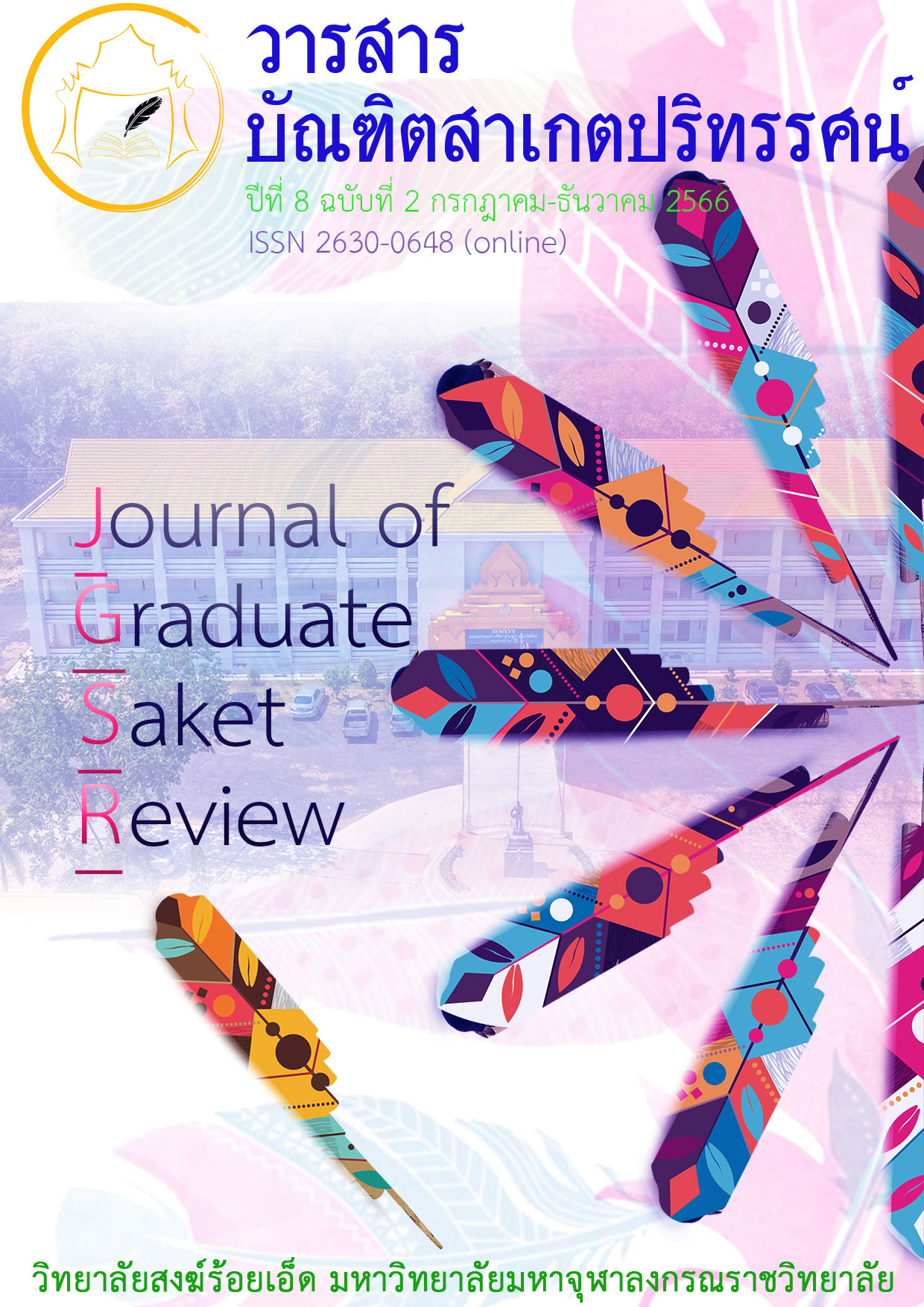A Project Evaluation on Math Diamond of Hua Hin Vitthayalai, Prachuapkhirikhan Province
Main Article Content
Abstract
The purpose of this research is to evaluate the Math Diamond project of Hua Hin Vitthayalai School in Prachuapkhirikhan province by using a mixed-methods approach of quantitative and qualitative research. In case of quantitative data collection, the researchers used the CIPP model of Stufflebeam to evaluate the environmental and input factors, and used the Kirkpatrick model to evaluate the reaction factors. The framework of Krathwohl was used for the psychological assessment. The sample group for the research consisted of 32 participants, including students, teachers, and parents. Data analysis was conducted using
statistical analysis program, including mean and standard deviation. Qualitative data collection was carried out by using structured interviews with 13 teachers and 8 parents. Inductive method was used for content analysis.
The results found that the project context assessment includes the overall evaluation of the environment factor was at the highest level (x̅ = 4.67, S.D. = 0.51), as well as the input factor (x̅ = 4.68, S.D. = 0.45), and reaction factor (x̅ = 4.66, S.D. = 0.49). The project context assessment was higher than the specified criteria at the level of .05 significance. The psychological assessment had the highest average score in the response factor (x̅ = 4.69, S.D. = 0.42), which was consistent with the qualitative data that all teachers and parents were satisfied with the management system and wanted to send students to participate in the competition again. The psychological assessment was higher than the specified criteria at the level of .05 significance.
Article Details

This work is licensed under a Creative Commons Attribution-NonCommercial-NoDerivatives 4.0 International License.
เนื้อหาและข้อมูลในบทความที่ลงตีพิมพ์ในวารสารบัณฑิตสาเกตปริทรรศน์ ถือเป็นข้อคิดเห็นและความรับผิดชอบของผู้เขียนบทความโดยตรงซึ่งกองบรรณาธิการวารสาร ไม่จำเป็นต้องเห็นด้วย หรือร่วมรับผิดชอบใด ๆบทความ ข้อมูล เนื้อหา รูปภาพ ฯลฯ ที่ได้รับการตีพิมพ์ในวารสารบัณฑิตสาเกตปริทรรศน์ ถือเป็นลิขสิทธิ์ของวารสารบัณฑิตสาเกตปริทรรศน์ หากบุคคลหรือหน่วยงานใดต้องการนำทั้งหมดหรือส่วนหนึ่งส่วนใดไปเผยแพร่ต่อหรือเพื่อกระทำการใด ๆ จะต้องได้รับอนุญาตเป็นลายลักอักษรจากวารสารบัณฑิตสาเกตปริทรรศน์ ก่อนเท่านั้น
References
ดารณี ดวงจันทร์ทิพย์. (2533). การประเมินโครงการ. วารสารการวัดผลการศึกษา มหาวิทยาลัยมหาสารคาม, 1(1), 32-34.
ดำรง ศรีอร่าม. (2566). การประเมินโครงการพัฒนาทักษะการคิดของโรงเรียนบ้านค่าย สำนักงานเขตพื้นที่การศึกษามัธยมศึกษาชลบุรี ระยอง. วารสารวิชาการและนวัตกรรมทางสังคมศาสตร์, 5(1), 239-252.
นิกร สุกขชาติ และจิตณรงค์ เอี่ยมสำอาง. (2565). การประเมินโครงการฝึกอบรมพัฒนาบุคลากรทางการศึกษา เพื่อการเรียนรู้ในศตวรรษที่ 21 ผ่านระบบออนไลน์. วารสารวิชาการ มทร.สุวรรณภูมิ (มนุษยศาสตร์และสังคมศาสตร์), 7(2), 196-205.
ปราโมทย์ ขจรภัย, โฆษิต แพงสร้อย และพนัส โพธิบัติ. (2564). แบบแผนวัฒนธรรมองค์กรคัดสรรเพื่อส่งเสริมความเป็นเลิศในการเรียนรู้วิชาคณิตศาสตร์ ของนักเรียนในโรงเรียนสำนักงานเขตพื้นที่การศึกษาประถมศึกษากรุงเทพมหานคร. วารสารสังคมศาสตร์และมานุษยวิทยาเชิงพุทธ, 6(8), 342-356.
พยนต์ น้อยนาดี. (2565). การประเมินโครงการนิเทศภายในวิทยาลัยเทคนิคพังงา ปีการศึกษา 2564. วารสารสหวิทยาการวิจัยและนวัตกรรมการศึกษา, 1(2), 35-48.
Duangjantip D.. (1990). Project Evaluation. Journal of Educational Measurement Mahasarakham University, 1(1), 32-34.
Pramote Kajornpai, Kosit Peangsoi and Phanat Phothibat. (2021). School Selected Organization Culture Pattern for Enhancing Excellent Arithmetic Learning of School Students under the Office of Bangkok Primary Education Area. Journal of Social Science and Buddhistic Anthropology, 6(8), 342-356.
Payon Noinadee. (2021). An Evaluation of the Supervision Project of Phang-nga Technical College Academic Year 2021. Journal of Interdisciplinary Research and Educational Innovation, 1(2), 35-48.
Sriaram D.. (2023). Evaluation of the Thinking Skills Development Project of Ban Khai School area officeSecondary Education Chonburi, Rayong. Journal of Academic and Social Science Innovation, 5(1), 239-252.
Sukachart N. and Lamsam-ang C.. (2022). Evaluation of the training program for the development of educational personnel for learning in the 21st century through online. RMUTSB Academic Journal (Humanities and Social Science), 7(2), 196-205.


